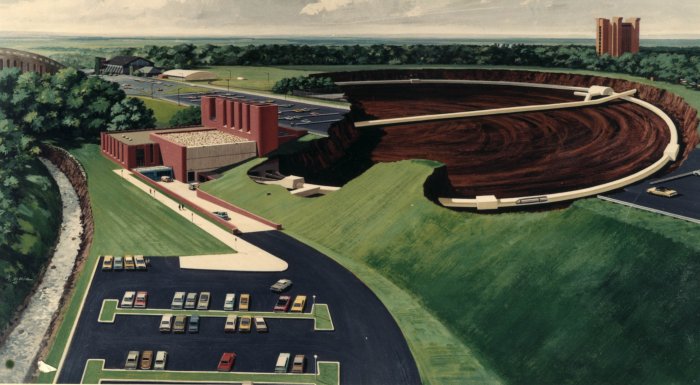Director's Corner
5 June 2008
 Barry Barish |
Critical electron cloud studies at Cornell
Last week we reported on the beginning of our important experimental programme on electron cloud effects, using the Cornell Electron Storage Ring (CESR) accelerator at Cornell University. This is one of our highest-priority R&D goals during the ILC Technical Design Phase 1 (TDP-1) and is aimed at understanding the magnitude of the problem for the ILC positron damping rings and the effectiveness of our proposed mitigation techniques. Last year, the Global Design Effort R&D Board, chaired by Bill Willis, investigated various options worldwide for us to undertake these crucial tests. They endorsed the Cesr-TA (Test Accelerator) proposal which promised the timeliest results. It was subsequently approved and funded by the National Science Foundation (NSF). The conversion of CESR to undertake these tests is now underway and actual testing will begin shortly.
Electron cloud effects have been recognised as a potential problem for the ILC positron damping rings since very early in our design process. In fact, our early baseline used two positron damping rings, one on top of the other, with the beam pulses injected alternately into these two rings to spread out the bunches and reduce the effect. This was a costly solution and various studies were undertaken that led to much of our present understanding of the effects and how to mitigate them. The proposed mitigation techniques consist of grooving and coating the ILC damping ring vacuum chambers.
We gained enough confidence through these studies to change the baseline to a single positron damping ring. Subsequently, this solution enabled us in our cost reduction studies to consider an alternative design where the damping rings moved to the centre of the ILC, sharing one tunnel for both the electron and positron damping rings.
We have to go beyond the promising simulation studies and early tests to demonstrate experimentally that we can control the electron cloud effects at a sufficient level. Because this is one of our highest priorities during TDP-1, we are very much looking forward to results from the Cesr-TA programme. We are indebted to the NSF for extending their support at Cornell to carry out this programme. The Cesr-TA programme we envision has a strict timetable, because it requires keeping the whole Cornell accelerator and light source complex running.
The measurements themselves will represent an important step forward in understanding the electron cloud problem since there have been no previous measurements in a wiggler-dominated machine with the high beam current and ultra low emittance characteristics of the ILC positron damping ring. The CESR ring already has twelve superconducting high-field wigglers with parameters that are very similar to those specified for the ILC damping ring. The machine lattice can be reconfigured for operation at ultra low emittance. In Cesr-TA, the characteristics of the electron cloud in a damping wiggler vacuum chamber along with the buildup in a bending magnet, quadrupole magnet, and straight vacuum chambers can be measured. A systematic set of measurements will determine the dependence for various effects of cloud characteristics. These parameters are: density, growth rate, decay time on beam current and bunch configuration, spacing, beam emittance and energy, as well as thresholds.
Unfortunately, the story is more complex, because the fallout of the DOE ILC funding reduction in FY08 has been to reduce the vital DOE contributions to this programme. We have had to scramble to make up for the lost DOE support for equipment for these tests and to build a strong international effort to carry out these measurements. In addition, CESR is a much smaller ring than the ILC damping rings and therefore we will need to rely on well benchmarked simulations - through the tests described above, to reliably predict the size of the effects and our ability to mitigate them for the ILC damping ring. Therefore, rebuilding this simulation effort is very important and remains a challenge for us.
The Cesr-TA programme is directed very capably by Mark Palmer at Cornell. I would like to point out that electron cloud effects are an issue for many modern accelerators and these studies are likely to be of importance well beyond the application to the ILC.
-- Barry Barish

